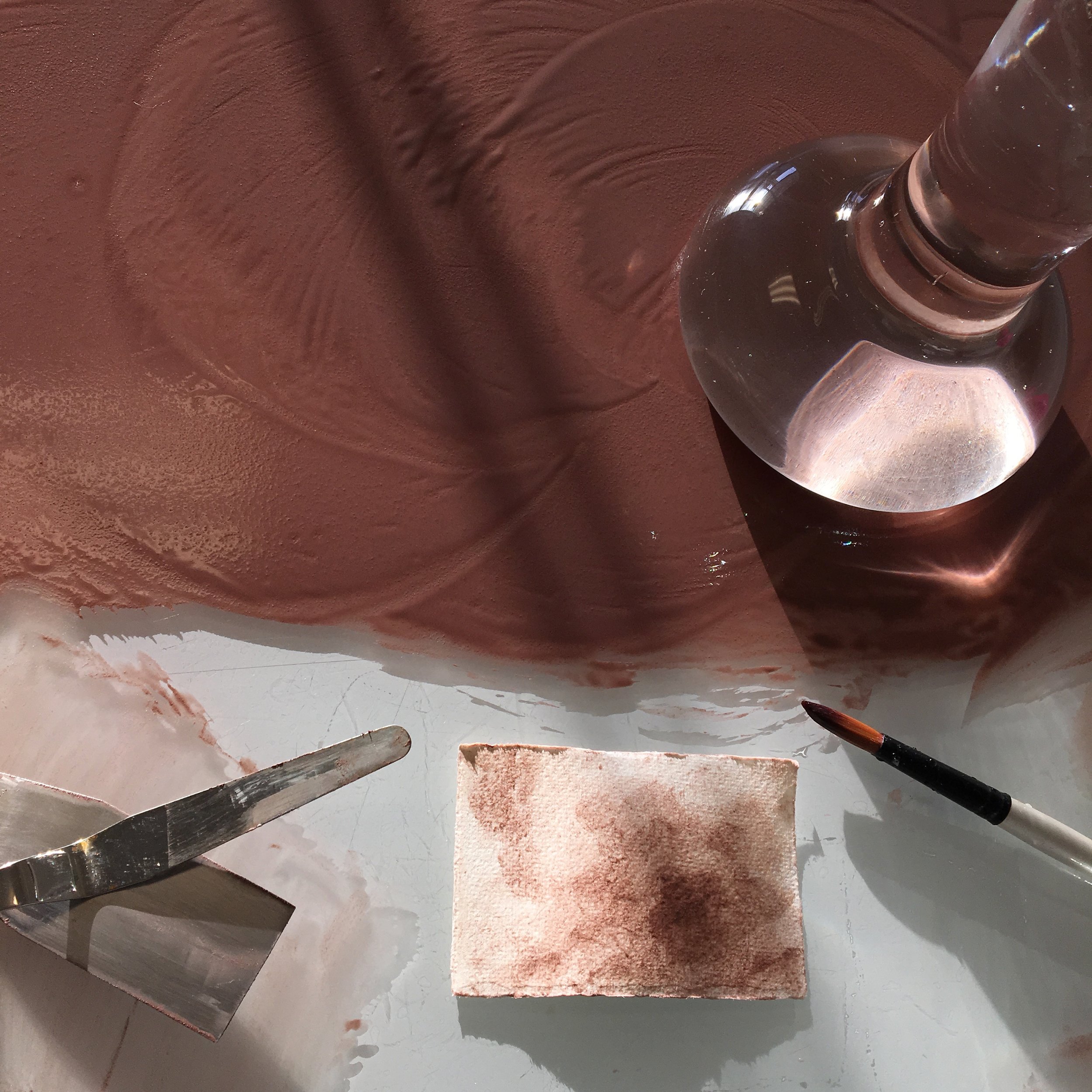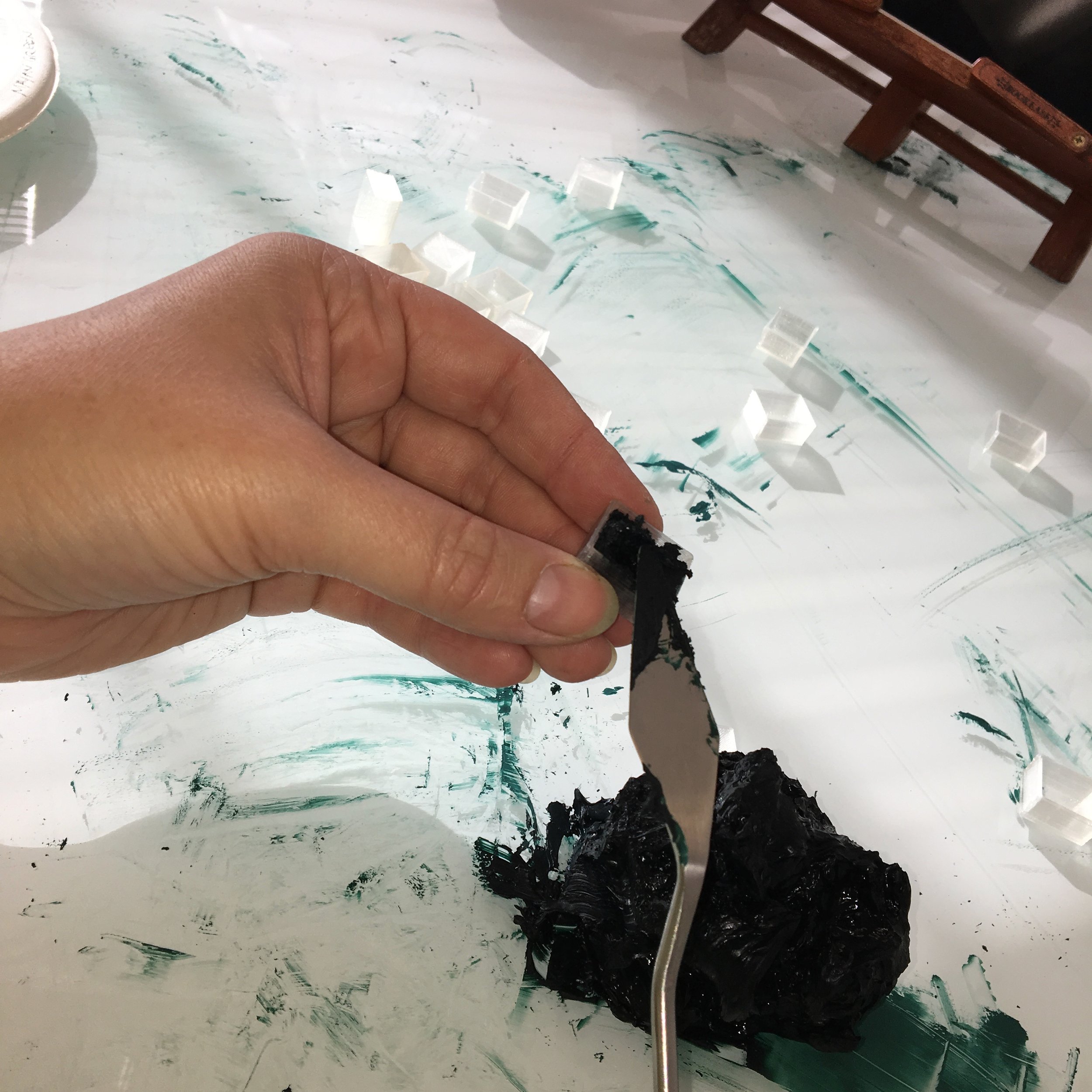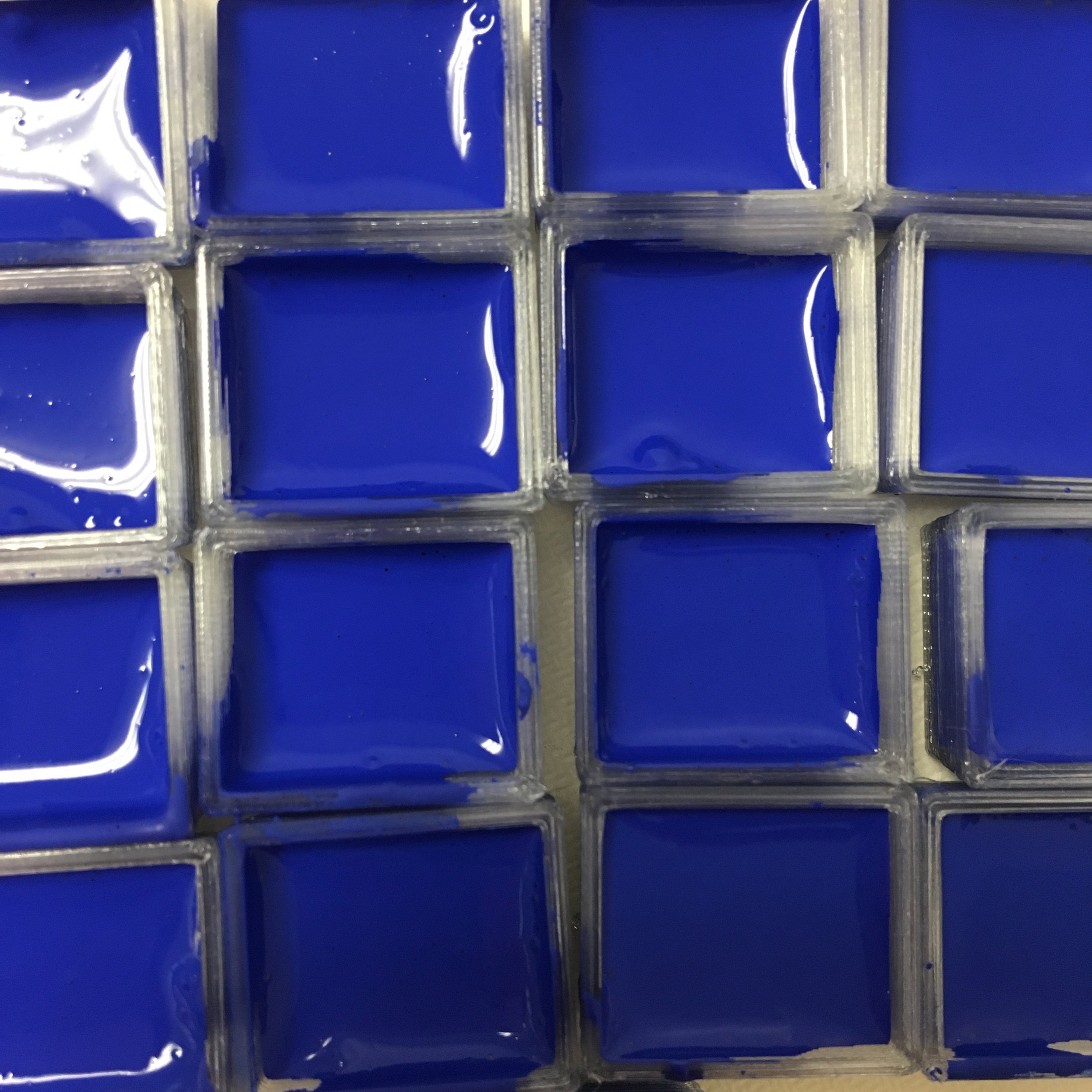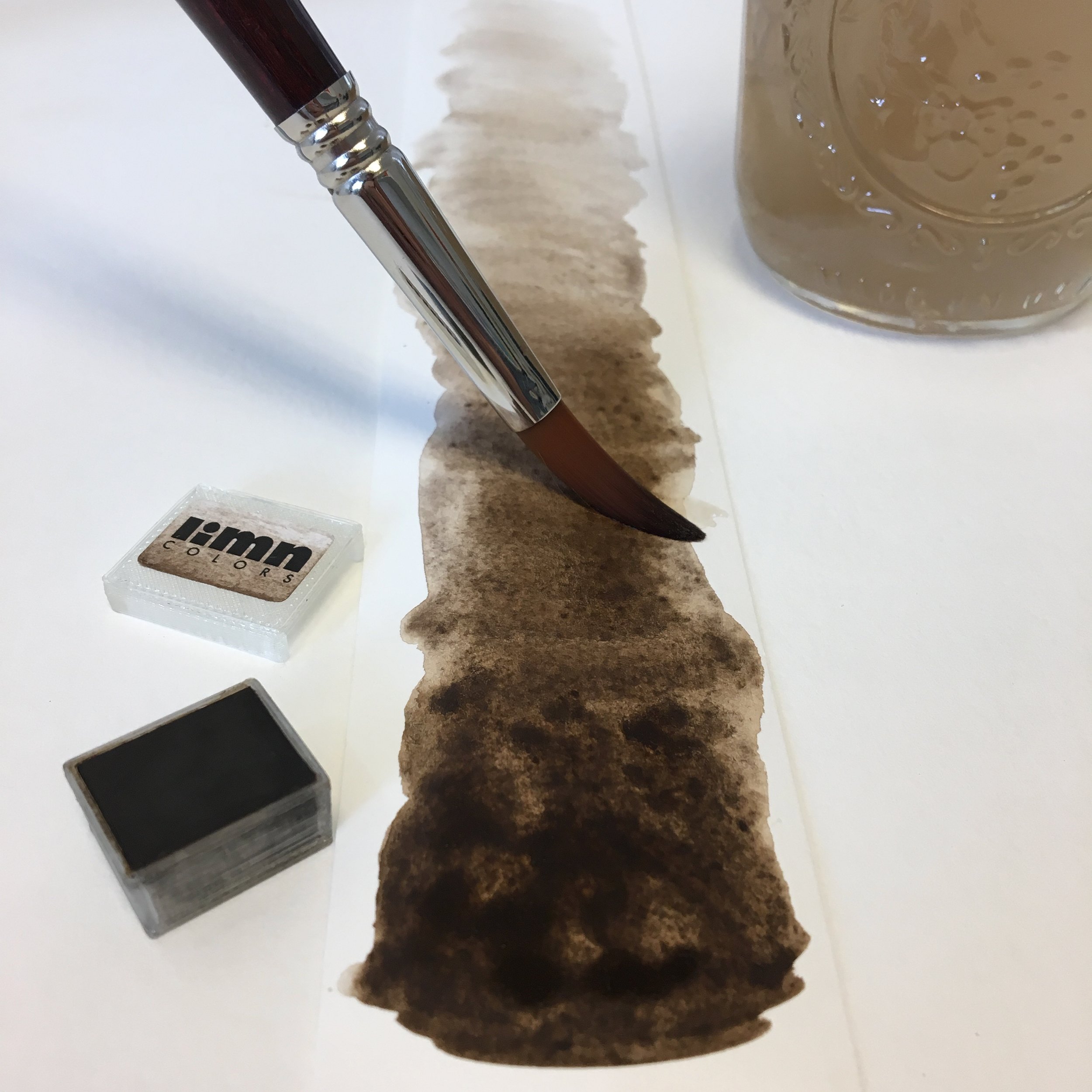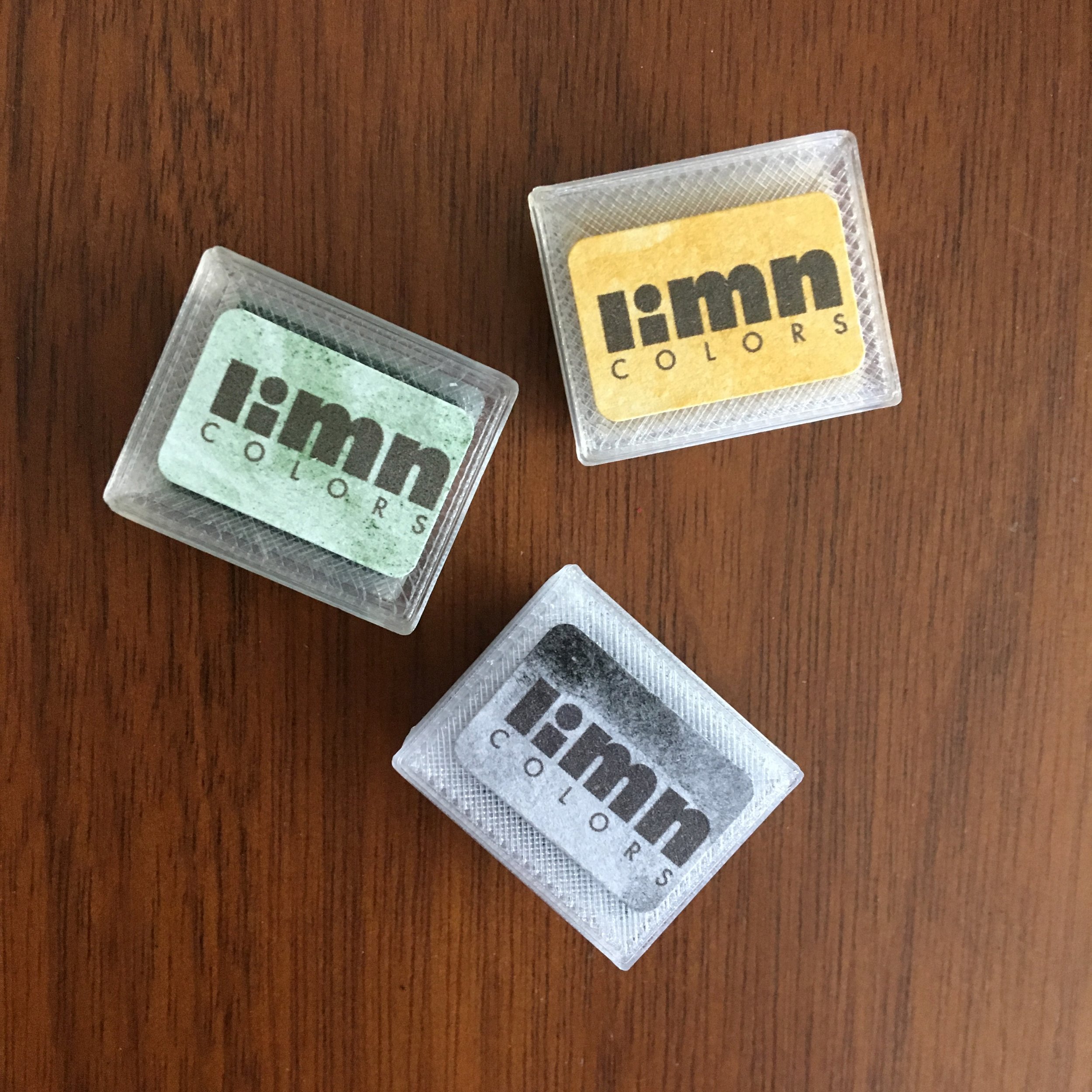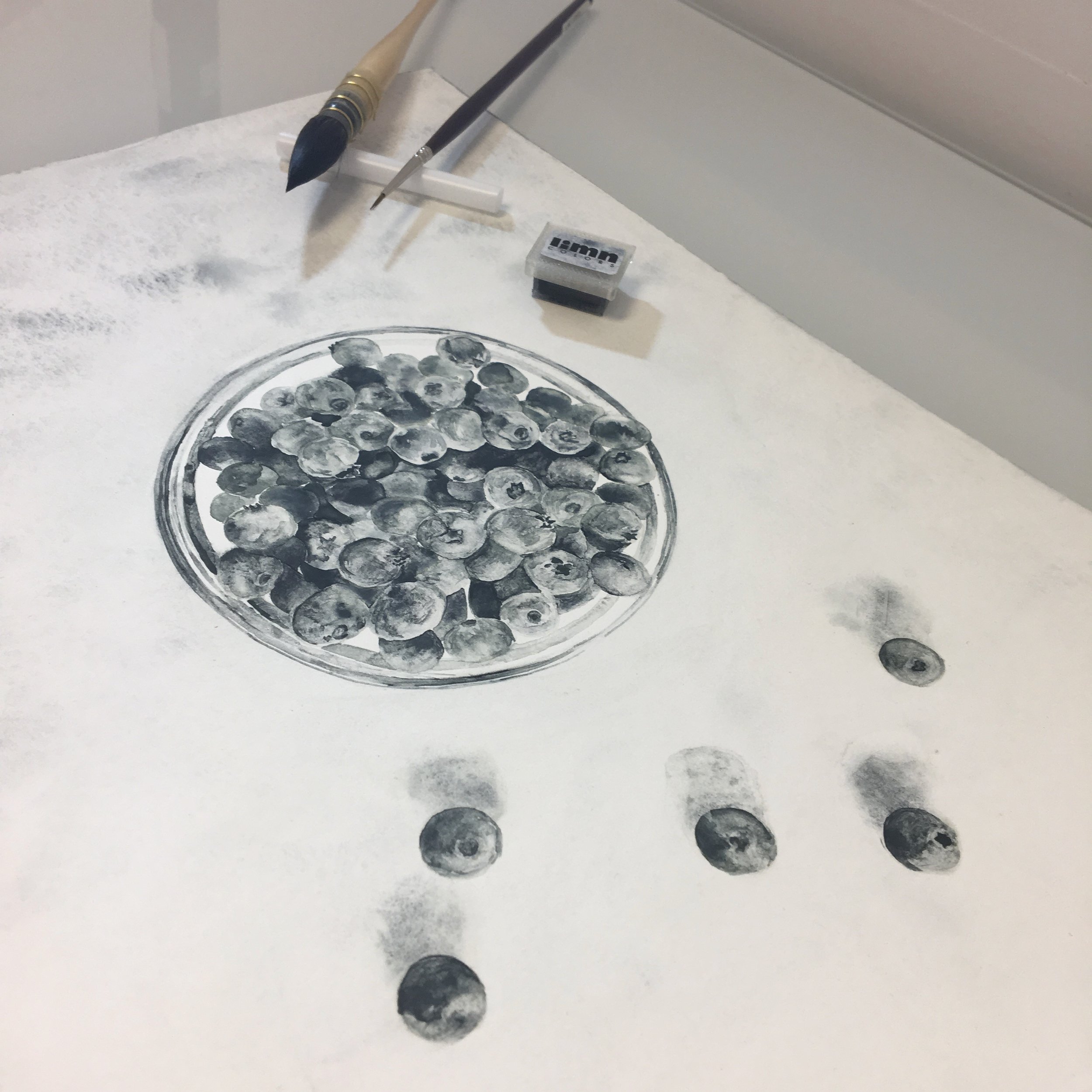ABOUT LIMN COLORS PAINT
Paintmakers have a lot of choices to make. How should the paint behave and how much, if at all, should we wrangle a pigment's natural properties? How should it diffuse in a wash, how moist is the paint in the pan, how should we package? What colors should we offer, and as a follow-up, do people really need that many options for yellow?
Our decisions in creating Limn Colors watercolor paints ultimately come down to what makes every pigment, on its own, special. We celebrate the materials used and create things that bring joy to people who create things!
Learn more about our paints in an interview with FLAX art & design.
If you are wondering about our name: limn (pronounced lim, the n is silent) is a late Middle English verb that means to describe in painting or words, to suffuse with a bright color or light.
INGREDIENTS
Limn Colors watercolor paint is made from pigment mixed with Limn Syrup watercolor binder. The binder consists of a propriety mix of ingredients rooted in paintmaking traditions.
Pigment is the paint's colorant, made synthetically or from minerals and earth
Gum arabic, the resin of the acacia tree, makes the pigment stick to the paper and not rub off like chalk; gum arabic increases solubility, gloss, transparency, and color intensity
Glycerol is a plasticizer, which helps rewetting of the gum arabic in pan paints and keeps the paint from being too brittle
Honey is a humectant that draws moisture from the air so the paint doesn't turn into a rock; honey also helps keep pigment mixed into the paint base
Clove oil is a fungicide; a minute amount is used to preserve the paint while it is curing in the pans
Different pigments require different amounts of binder, but each of our paints uses only the five ingredients above.
PRODUCTION PROCESS
For each small batch of paint, the pigment and Limn Syrup are mixed into an even dispersion. The paint is pushed into a thin film between a heavy glass muller and a tempered glass workbench, which ensures every particle of pigment is covered in binder. For micronized, ultrafine pigments, the paint is pre-mixed in a three roll mill to break down agglomerates before hand mulling. Once the paint has reached the correct consistency and smoothness, it is transferred to the pans. Each time the paint in the pan shrinks, we top it off with more paint. This curing stage usually takes two to four weeks, and by the time the paint is complete, the little pan contains a lot of concentrated paint! Finally, we clean up the container, slide on a lid, and add the painted labels. Every pan gets a lot of love, time, and attention as it goes from raw materials to packaged treasure.
3D PRINTING
Yes, we even make the plastic boxes that the paint comes in! We 3d print the pans and their lids in-house with clear PLA filament on a pair of Prusa MK3s. You can check out this video for a glimpse of what the 3d printing process looks like.
PLA (polylactic acid) is a bioplastic made from plant material like sugarcane or corn, the same stuff that compostable forks are made of. When your pans are empty, you can reuse them, but ultimately when you are ready to dispose of our pans or lids, send them off for industrial composting.
FILLER-FREE
Limn Colors paints contain no fillers. This puts the spotlight on the unique and exciting properties of each pigment. So while that means that yellow ochre will be wildly different from phthalo blue in transparency, tinting strength, and opacity, that is the exact thing that makes us obsessed with pigments, paints, and color. We love the way that no one is the boss of cadmium red, that graphite literally shines, and that terre verte mutes bright colors into wonderful new shades.
Most major manufacturers add fillers and extenders, such as dextrin, to their watercolor paint to make the paints similar across their color line and bulk out the tube or pan. For example, they may add a lot of filler to strong pigments to dampen their tinting strength. That has the benefit of making the entire line more intuitive by creating similarities from color to color, but it's also a bit "lowest common denominator". That's not meant to criticize all of the amazing paint out there, but to explain how our paints may differ from those you've used before. It all comes down to your preferences and which qualities are most interesting to you in watercolor paint.
PERMANENCE
Limn Colors paints are lightfast and suitable for artist use. Paints are either "excellent", which corresponds to 8 of 8 on blue wool scale or I by ASTM ratings, or "very good", which corresponds to 6-7 of 8 on BW or II by ASTM. Both of those permanence ratings are suitable for artists.
Some pigments may have different lightfastness ratings when applied diluted versus masstone. For example, applying some "very good" paints in higher concentration instead of light tints may improve its lightfastness to "excellent", whereas the opposite is true for other pigments. You can test paints yourself by painting out a graded wash, cutting the paper into two equal pieces, placing one in direct sunlight, and comparing the two samples over time.
Some paints, particularly those made from natural minerals can oxidize and change color. For example, vivianite can become greener when exposed to the air over long spans of time. Other iron oxides may change color if exposed to extreme temperature; just like raw sienna becomes the redder burnt sienna when roasted, other natural earth pigments can change if heated.
Protect your work with a frame fitted with UV-protective glass, particularly if you are hanging paintings near a sunny window. Buy the most stable and durable paper you can for your art. Papers can also darken, yellow, or break down over time, making your artwork deteriorate or show color changes regardless of the color stability of the pigments.
SINGLE PIGMENTS
When multiple pigments are used to make a single paint, it can end poorly. A manufacturer mixing white and red pigments to put pink on your palette may create a chalky, muted color. Or a violet made from a red paint and blue pigment might separate into its components in a wash if one pigment is heavier than the other (we love this effect, but not when it is unexpected or when you need an even, flat wash). Sometimes the downside shows up when you begin mixing colors, which can be a frustrating surprise. Say you have bright paints that produce muddy mixtures; there may be hidden pigments clouding your mix. None of that means you have to be a purist and blend everything yourself from a set of primaries. We understand the value of convenience colors, but all Limn Colors watercolor paints are made with a single pigment. Any pigment used is listed on the product’s page in our shop.
As a general rule, knowing the pigments in your paint, and their color properties like temperature and opacity, is a big step in being able to mix gorgeous, clear colors.
STORAGE
Half pans are familiar sizes if you buy pan paints. Though there is no single standard, our containers fit most palettes that hold pans, such as snap-in bijou boxes.
Each pan come with a plastic lid that slides off to the side. The lid was designed to offer protection during shipping without sticking to the paint like a paper wrapper might. You can send the lid off for composting (see 3d printing section above) if you don't want to store your paint pans individually.
For magnetized pans, slide the lids off and place the open pans into the metal box. In most cases, the pans will not fit in the case with their lids on.
Whether you store your paint in a palette or with its shipping lid, you should let the pan dry out after each painting session before closing it up.
CRACKS
Surface cracking on watercolor paints is natural and expected. As watercolor dries in the pan after production or a painting session (or squeezing tube paints into a palette or pan), the paint will contract as the water inside evaporates. Cracks are merely cosmetic, but if you hate the look of them, you can compress slightly moistened paints with a knife or other tool.
SWATCH ACCURACY
We strive to make the swatches and images on our site as close as possible to the actual paints. It's both fascinating and frustrating how different physical and digital color spaces are, particularly since all monitors and screens vary. Expect a little discrepancy between screen and paper. Please contact us with any questions.
PRICING
Paint prices vary by the pigment in the pan and the work involved in the paintmaking process. Some pigments are rare or difficult to create or extract from the earth, and thus more expensive. And some pigments take much longer to disperse, demand additional handling or disposal safety, or require more effort to complete.
Learn more about pricing and the value of handmade art supplies.
COLOR CODES
A sticker on the side or bottom of each pan shows the item number, which contains a 4- or 5-letter abbreviation of the color name: CAMO for caput mortuum, QUMA for quinacridone magenta, etc.
Click here for a list of the item codes and corresponding color names.
SAFETY PRECAUTIONS
Take precautions to keep paint off of and out of your body and keep out of reach of children, pets, and others known to make bad decisions.
Limn Colors is one of the only boutique paintmakers that undergoes toxicology testing to comply with US laws for FHSA, LHAMA, and ASTM D-4326. We care deeply about our health and yours!



